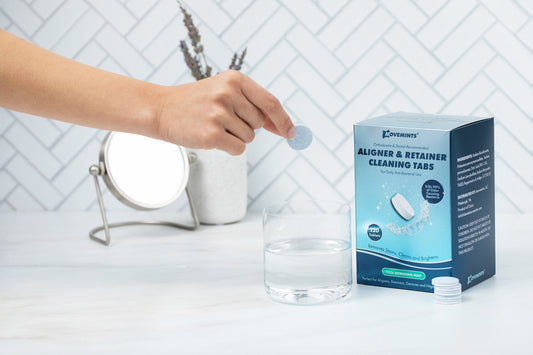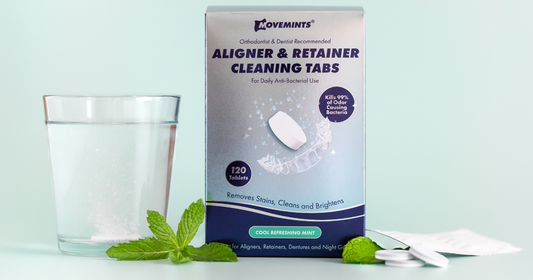How to Tell if Your Invisalign Trays Fit Correctly
Written by Dr. Dave Pechersky, practicing orthodontist and inventor of Movemints:
Throughout my career as an orthodontist, I’ve had the pleasure of helping my patients straighten their teeth with clear aligners. A common question I'm often asked is "how do I know if my trays fit correctly?"
It’s a good one - because if your aligners are loose or not seating properly, they won’t move your teeth effectively. That’s why I developed Movemints, edible mints designed to help patients seat their aligners comfortably while freshening their breath. Proper seating is key to ensuring your trays “track” as planned, preventing refinements and treatment delays.
First: What Is Invisalign Tracking?
Invisalign "tracking" refers to how closely your trays align with the shape of your teeth. Your trays are tracking properly if they feel snug and tight, the edges of the tray follow your teeth's shape, and there are no major air gaps or looseness.
A little tightness (even pain) is normal, especially with a new set. That means the trays are working. But if your aligners feel loose, especially on your back teeth, or there’s a visible gap between the plastic and your teeth, you’re likely dealing with poor tracking.

What Causes Invisalign Tracking Issues?
-
Stubborn Teeth
Some teeth move slower than predicted. They're not "misbehaving", they’re just rooted in bone, not floating in space. You may need attachments (those little bumps placed on your teeth) to help guide movement more precisely. -
Not Wearing Aligners Enough
You should wear your trays at least 22 hours a day. Taking them out for meals, brushing, meetings, etc.? Totally fine. But they need to be back in ASAP or they’ll fall behind schedule. -
Moving Too Fast
Believe it or not, your trays can also get loose if your teeth move faster than expected. Never jump ahead to the next tray without orthodontist approval - it can cause more problems than progress.
What to do if Your Invisalign Doesn’t Fit
Step 1: Do Chewing Exercises Every Time You Switch Trays
When you pop in a new set, you’ll probably feel some tightness and resistance. That’s normal! But it’s your job to seat them fully.
Instead of using foam Chewies, try Movemints: edible mints designed by an orthodontist (me!) to help seat aligners and freshen your breath.
✅ Sugar-free and aligner-safe
✅ Patented groove helps seat aligners
✅ Sweetened with xylitol to fight dry mouth and bacteria
Step 2: Track Your Wear Time Like a Pro
Most tracking problems stem from inconsistent wear. Use an app like TrayMinder (created by a fellow orthodontist!) to stay on top of your 22-hour goal.
Bonus tip: Set phone alarms after meals to remind yourself to pop them back in.
Step 3: Clean Your Aligners Properly
Gunk, buildup, or residue can mess with the fit and comfort of your trays.
Use a deep-cleaning tab like our Aligner & Retainer Cleaning Tabs to sanitize and refresh your trays without damaging the plastic.
Step 4: Consider Backtracking (But Ask Your Ortho First)
If your new tray just won’t fit, even after chewing exercises and consistent wear, you may need to go back to your last tray for a few more days.
This helps your teeth “catch up” before progressing, but only do this with your orthodontist’s guidance.
Final Thoughts
Tracking issues are a common part of the clear aligner journey. But if you stay on top of your wear time, seating exercises, and oral hygiene, you can prevent delays and keep your treatment moving forward.







